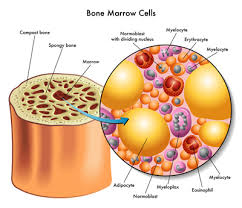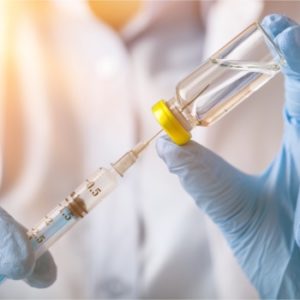
Recently Diagnosed or Relapsed? Stop Looking For a Miracle Cure, and Use Evidence-Based Therapies To Enhance Your Treatment and Prolong Your Remission
Multiple Myeloma an incurable disease, but I have spent the last 25 years in remission using a blend of conventional oncology and evidence-based nutrition, supplementation, and lifestyle therapies from peer-reviewed studies that your oncologist probably hasn't told you about.
Click the orange button to the right to learn more about what you can start doing today.
- You are here:
- Home »
- Blog »
- Multiple Myeloma »
- Myeloma End-Stage, Hospitalization, Death
Myeloma End-Stage, Hospitalization, Death

As a multiple myeloma (MM) cancer coach my job is not to tell MM patients/survivors what to do. My job is to point out the risks and benefits, the pros and cons of the issues and the therapies. The two studies linked below illustrate end-stage, hospitalization, death for the relapsed, refractory multiple myeloma patient (RRMM).
When a person is diagnosed with MM, their oncologist will recommend a therapy plan. He/she will say something like “I recommend induction therapy of Revlimid, Velcade and Dexamethasone (RVD) followed by an autologous stem cell transplant (ASCT), followed by low-dose maintenance Revlimid.” This therapy plan is what is referred to as the “standard-of-care” for multiple myeloma.
I’ve never heard of an oncologist mentioning what the studies say about end-stage and death of MM survivor. Nor to oncologists mention probable adverse events such as the ones listed below such as:
- vascular disorders (38.9%);
- surgical and medical procedures (31.1%);
- musculoskeletal and
- connective tissue disorders (22.9%);
- metabolism and nutrition disorders (20.8%);
- and benign, malignant, and unspecified (including cysts and polyps) neoplasms (15.0%).
Oncology’s definition of “favorable safety profile” is much, much different than my definition of “favorable safety profile.”
Here is what the two studies linked below thoroughly illustrate.
The average MM patient will undergo induction therapy of RVD and then an ASCT. Their first remission will last for years hopefully. When they relapse, which all MM patients do eventually, they will undergo more chemotherapy- possible a doublet or triplet, achieve another remission, relapse, etc.
The ugly fact highlighted by the articles below is that about half of each of us will die in the hospital after living through short, long-term and late stage side effects. When I talk about side effects aka adverse events, I am saying that both lists below,
- Patient histories and
- Comorbidities
Are both caused by toxicity whether from chemotherapy or radiation.
What the two articles below are graphically illustrating is the effect of several rounds of SOC, FDA approved “safe and effective” therapies cause a list of ugly, painful side effects that put many of us in the hospital. Where, despite their best efforts, medical doctors treat us and we die.
I don’t know about you but I will do everything in my power to make sure end stage, hospitalization and death does not happen to me. Ask yourself these questions:
- What if I took less chemotherapy than my oncologist recommended?
- What if I added complementary therapies to my daily, weekly, monthly regimen?
- What if I added evidence-based but non-toxic therapies to my regimen?
Please don’t misunderstand me. I am not saying that chemotherapy is always the bad guy in MM management. I am saying that aggressive, high dose chemotherapy is the cause of the damage documented below. I am saying that control is preferable to cure in the cure vs. control debate in MM.
Further, I am not saying that your oncologist is the bad guy either. Oncology practices are strictly controlled by the Food and Drug Administration here in the United States. In my opinion, it is nearly impossible to come up with a MM treatment protocol for the average MM patient (95% of which are 69 year old, stage 2,3) as well as those MM patients who are younger, older, stage 1 MM, genetic abnormalities- in short, anyone who does not want the average treatment protocol.
- Click now to learn more about end-stage multiple myeloma
- Click now to learn more about death and the myeloma survivor
To learn more about evidence-based, non-toxic, non-conventional therapies scroll down the page, post a question or a comment and I will reply to you ASAP.
Thank you,
David Emerson
- MM Survivor
- MM Cancer Coach
- Director PeopleBeatingCancer
Recommended Reading:
- Multiple Myeloma Chemotherapy = Accelerated Aging
- Relapsed/Refractory Multiple Myeloma- Efficacy, Cost, AE’s
- Multiple Myeloma Therapy- Curcumin for Both Symptoms, Side Effects
Nearly Half of Patients with Multiple Myeloma Die in the Hospital
“Findings presented at the ASH 2020 Annual Meeting & Exposition found that almost half of patients with multiple myeloma (MM) die in the hospital, requiring significant end-of-life care…
These data were compared with rates of MM-related mortality between 2002 and 2014 via reports from the Centers for Disease Control and Prevention (CDC) and the National Cancer Institute (NCI)…
The CDC and NCI reported a total of 144,105 deaths from MM, ranging from 10,913 in 2002 to 12,112 in 2014. During this time, a total of 233,932 hospitalizations for MM were recorded by the NIS database (unweighted), of which 14,770 of these patients died in the hospital, or 6.3% of total MM-related hospitalizations.
Utilizing these figures, a weighted sample of 69,823 in-hospital deaths from MM were identified during the study period. The researchers estimate that nearly half (48.4%) of patients with MM died in the hospital, ranging from 54% of deaths in 2002 to 41.6% in 2014 (P<0.01)…
Hospitalization for MM was also linked to increase resource utilization. About 35% of hospitalized patients with MM who later died in the hospital received blood transfusion.
- Palliative care or hospice were consulted in 5.3% of hospitalizations in 2002 and 33.57% in 2014.
- Infections occurred in 45% of patients.
The median cost of hospitalization prior to in-hospital mortality increased from $48,709 in 2002 to $104,115 in 2014 (P<0.01)…”
Daratumumab Monotherapy Safe in Heavily Treated Relapsed or Refractory Multiple Myeloma
“An early access treatment protocol (EAP) found that daratumumab monotherapy was safe in a population of patients with heavily treated relapsed or refractory multiple myeloma (RRMM)…
“Collectively, this EAP provides additional evidence of the favorable safety profile of daratumumab in patients with heavily pre-treated RRMM and the associated maintenance of patient-reported health-related quality of life (HRQoL),” the researchers concluded...
Patients who were previously treated with at least three lines of therapy including a including a proteasome inhibitor (PI) and an immunomodulatory drug (IMiD) or who were double refractory to a PI and IMiD were given intravenous daratumumab 16 mg/kg…
Patient histories included-
- vascular disorders (38.9%);
- surgical and medical procedures (31.1%);
- musculoskeletal and
- connective tissue disorders (22.9%);
- metabolism and nutrition disorders (20.8%);
- and benign, malignant, and unspecified (including cysts and polyps) neoplasms (15.0%).
Comorbidities affecting more than 5% of patients included
- hypertension (31.4%),
- peripheral neuropathy (6.8%),
- anemia (6.8%),
- hypercholesterolemia (5.8%),
- deep vein thrombosis (5.5%),
- back pain (5.5%), and
- pulmonary embolism (5.1%)…
Daratumumab aka Darzelex-
- The median duration of daratumumab exposure was 4.2 months
- The overall response rate was 33.1%.
- Progression-free survival was 4.63 months.
Overall, 60.1% of patients experienced grade 3 or 4 treatment-emergent adverse events (AEs), the most common being thrombocytopenia (18.8%), anemia (11.9%), and neutropenia (11.6%); serious AEs most commonly reported were pneumonia (4.4%) and pyrexia (4.1%)…”


